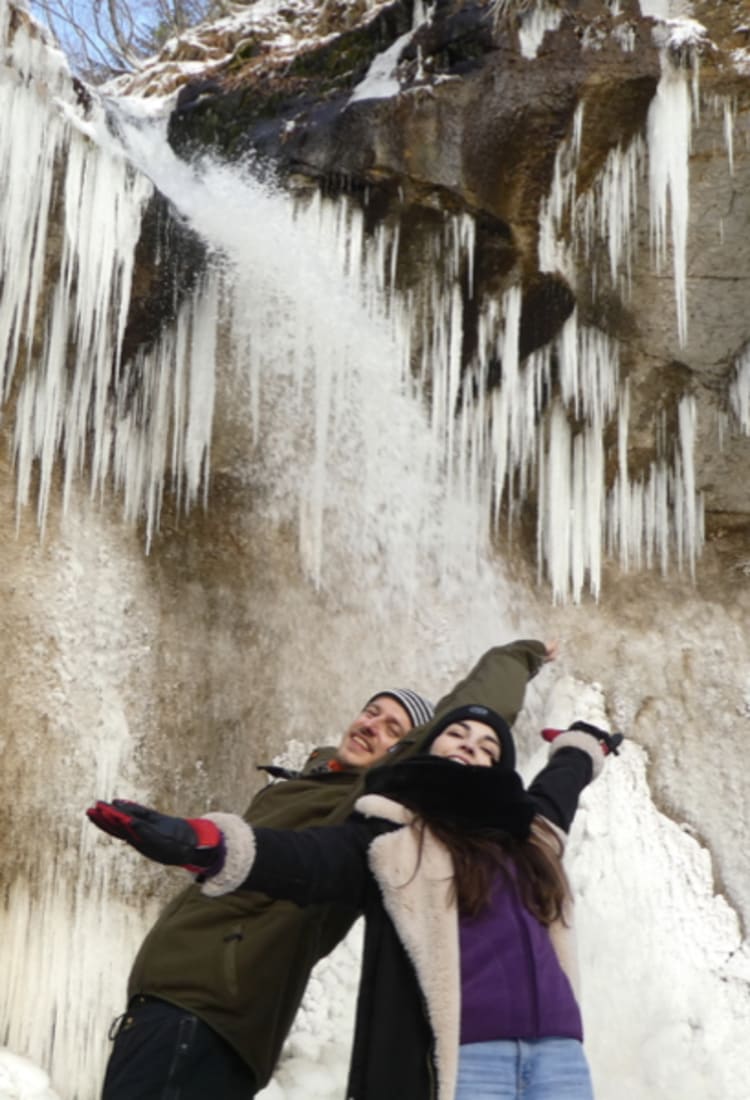
Hokkaido and its pristine wilderness: Master the joys of winter
Hokkaido and its pristine wilderness: Master the joys of winter
Be amazed by the magnificent scenery born of the wild and dive into a world of ice
Shikotsu-Toya National Park is one of Hokkaido’s six national parks. Easily accessed from Hokkaido’s main center, Sapporo, as well as from Shin-Chitose Airport, this is a popular place to enjoy the wilderness. Snowshoe tours are a hot winter activity here at the moment. Most highly recommended is the walking tour of the mountains to view the frozen Nanajo Falls. Tours typically run from January through to the end of March.

Snowshoes are trekking gear that clip on under shoes to allow walking in snowy mountain areas. Even in fresh snow that makes it hard to go anywhere normally, snowshoes make walking easy. First up is a quick briefing from the nature guide about snowshoes, then it is a 2-kilometer walk into Nanajo Falls, a return trip of 3 hours. Once you step into the pure white snow of the mountains, the only audible sound is that of your footsteps. You will be enveloped by an ethereal sense unlike anything to do with everyday life. On the way, you may come across deer, fox and rabbit tracks in the snow. The nature guide will brief you about the virgin forest and for about 30 minutes you will fall into the rhythm of your stocks as you slowly walk along the forest trail. You will hear the sound of the river as you near Nanajo Falls.

The magnificent frozen waterfall rises before you. The longest icicles are about 10 meters long, and there is some 40 meters of hanging crystals. They are a stunning sight. The water in the river is very clear, which means the icicles are also transparent, so they reflect light with a sparkle. The angle of the sun’s rays in the morning in particular conjures up rainbows. The overwhelming vitality of nature is spellbinding, a sense that cannot be replicated in a manmade structure. This is none other than a work of art from the hand of nature. For those looking to immerse themselves even more deeply in the wilds of Hokkaido, an ice walk on Lake Shikotsu, which boasts the clearest water in Japan, is for you. It can only be attempted during the short window of January to March, when the lake is covered in ice.
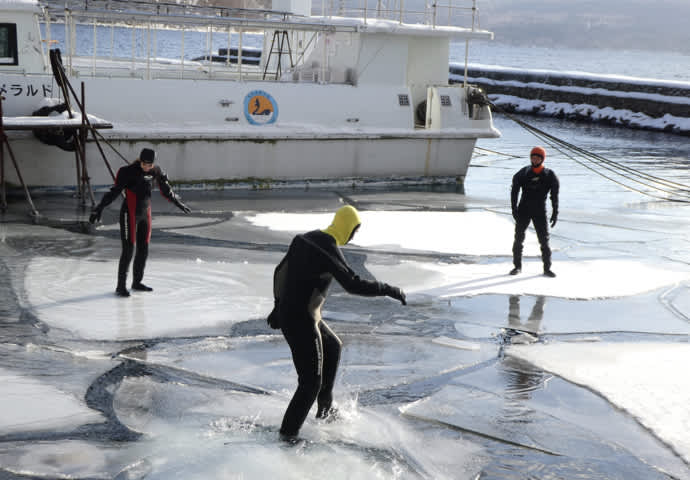
An ice walk involves pulling on a dry suit, preventing any water from reaching the body, and diving into fresh snow, walking on ice, and diving into the lake. You may have trouble believing it to be possible in this frozen climate, but the dry suit does indeed keep you warm and dry and even non-swimmers can jump in the lake, because it also keeps you afloat. At first you may hesitate to jump in the frozen lake but once you take plunge, you will soon get used to it. Slip and slide on the ice, or take a jump and crash through into the lake. This is a chance to experience something totally out of the ordinary.

Lake Shikotsu Ice Walk
Hokkaido is a thermal wonderland of over 2,000 hot springs
The geothermal energy of 31 volcanoes of Hokkaido is the source of over 2,000 hot springs, making this a leading thermal zone in Japan. Noboribetsu Spa, one of Japan’s finest onsen resorts, can be accessed by limousine bus from Shin-Chitose Airport or about an hour’s drive, and is visited by 4 million tourists a year.
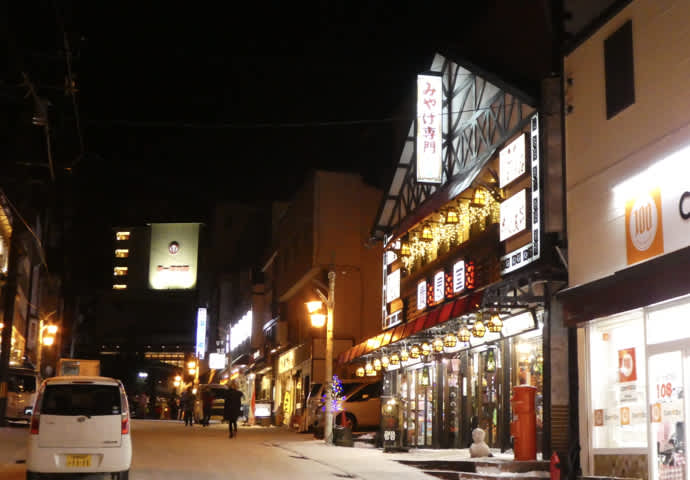
Noboribetsu Spa, onsen resort
Noboribetsu Spa features excellent flows of spring water and nine different types of springwater that benefit skin ailments, neuralgia, muscular pain, high blood pressure, sensitivity to cold, gastrointestinal illness, feminine ailments, bruising and clear skin. Such variety is extremely rare anywhere in the world. This is sometimes called “the department store of hot springs.” In the heart of the thermal zone is one of the most Japanese of hot spring resorts. From restaurants and bars to souvenir shops and Ainu craft stores, walking down the street is a joy here. One of the key characteristics of Noboribetsu Spa is that Hell Valley is so close to the resort. Hiyoriyama, an active volcano, is the remnant crater of a huge eruption about 10,000 years ago. It still produces a total of 10,000 liters of hot water per day. Noboribetsu Hell Valley is a 10 minute walk along a recreational pathway interrupted by steam and the sulfurous aroma of boiled egg at every turn. The name Hell Valley derives from the resemblance of the valley to a different planet and the Buddhist concept of hell.

If you are looking for a different sort of hot spring from the usual offering, just ease into a foot bath. On the trail from Hell Valley (which may be closed at times during winter), 20 minutes of walking will take you to Oyunuma River Natural Foot Bath. This is a hot spring where you dip your feet in a river that flows down from a thermal source.
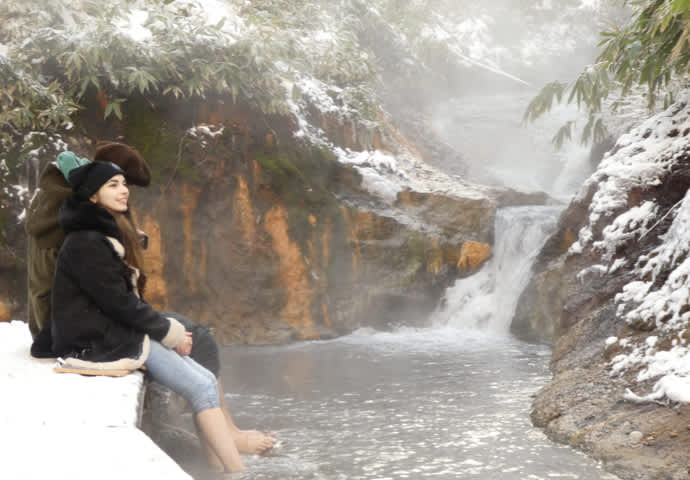
Perch on the wood bench in the midst of nature and just by dipping into the water above your ankles, you feel warmth throughout your entire body. The sandy bottom of the river caresses the soles of your feet, just the thing you need after a solid session of forest bathing on the trek in.
Get up close with animals in a splendid natural setting
Hokkaido is home to a large number of wild animals. Encounters with these creatures is part of the attraction here. Noboribetsu BearPark is about 7 minutes by ropeway from Noboribetsu Spa. In the mountains on the way here, you may spot a wild deer flashing among the trees. Over 70 brown bears can be seen at the bear park.

Brown bears in the bear park
This is a bear park but the bears are not totally on the loose. The brown bears are very used to humans, though, and the way they come looking for extra food is rather endearing. And when you enter the “human cage,” which extends into the bears’ area, they saunter up to the window for you to feed them. They are fed through the window, but the experience of staring into the face of a giant bear at a distance of one foot can be unimaginably gripping.
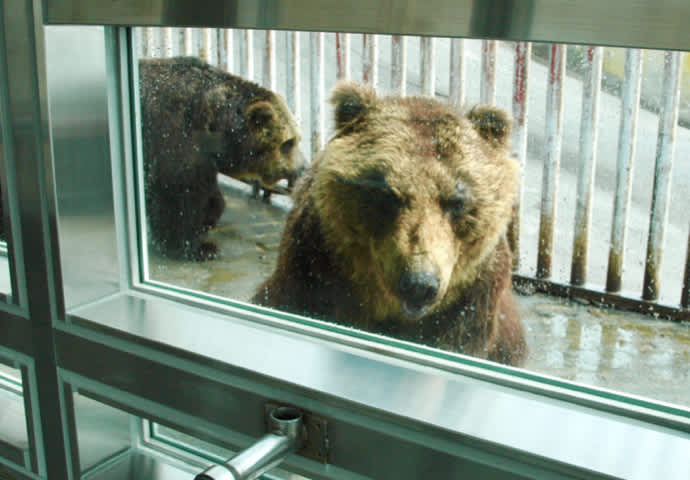
Encounter a bear from a “human cage”
Our final stop is Northern Horsepark, a 15-minute drive from Shin-Chitose Airport. This is a region famous for horse-rearing. At every turn there are farms that breed world-class racehorses and the area is catching the eye of the global thoroughbred industry. Northern Horsepark has a stable of some 80 retired racehorses and ponies for you to visit, including feeding and shows.

The thrill of the horse-riding is becoming one with the animal and feeling its breath and the warmth of its body. Many would be excited by the sense of dynamism and power in every step. Encountering these horses on a plain featuring stands of trees, under a clear blue sky reminiscent of the highlands, is a refreshing tonic for the soul.
Inquiries
■Ocean Days (Nanajo Falls Snowshoe Tour, Lake Shikotsu Ice Walk)
■Noboribetsu Spa
■Noboribetsu BearPark
■Northern Horsepark




























































